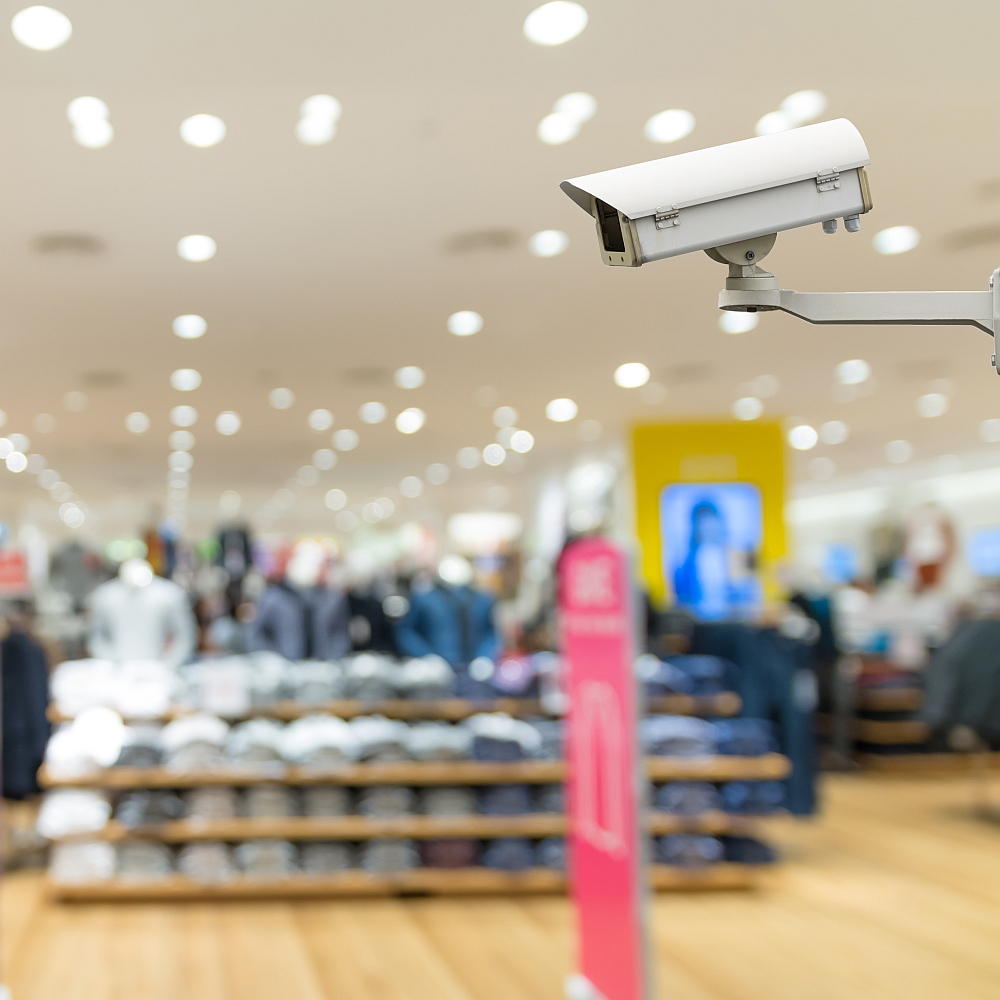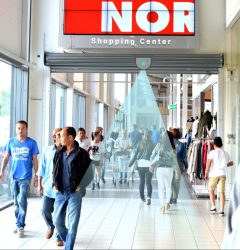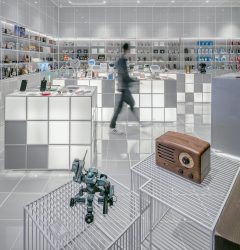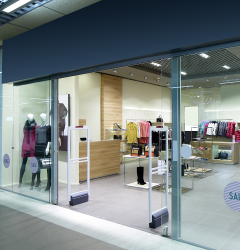27 Sep

Optimizing Retail Layouts: How Footfall Counters Reveal Customer Behavior
In an era where the digital marketplace is continuously growing, brick-and-mortar retailers must leverage innovative technologies to remain competitive. One of the most potent tools in this endeavor is the retail people counter. This advanced system is not just a numeric tracker; it’s a goldmine of actionable insights, offering a comprehensive look into consumer behaviors, preferences, and patterns within a physical store. By unlocking a deeper understanding of these elements, retailers have the opportunity to craft a more engaging and efficient shopping environment, tailored to meet the specific needs and expectations of their customer base. Footfall counters operate by monitoring and analyzing the movement and behavior of customers from the moment they enter the store. These retail door counters collect data on customer entry and exit, providing a clear picture of the store’s foot traffic. This data is fundamental for understanding peak shopping times and for making informed decisions regarding staffing, inventory, and sales strategies.
Beyond a basic count of visitors, these systems offer a granular view of customer pathways inside the store. By analyzing this data, retailers can discern which areas of the store attract the most traffic, allowing them to strategically place products for maximum visibility and accessibility. Retail footfall counting reveals valuable insights into areas that are often frequented by customers, and those that are generally overlooked. This knowledge enables retailers to adjust their store layout, ensuring an optimal shopping experience for customers and potentially boosting sales. Additionally, footfall counters contribute to enhancing personalized shopping experiences. These devices help understand which sections of the store customers spend the most time in, permitting retailers to tailor their displays, promotions, and product placements to align with customer preferences. This level of personalization not only enhances the customer’s shopping experience but also significantly increases the likelihood of sales and customer retention. The insights gained from these sophisticated counting systems further empower retailers to optimize their staffing. By identifying the busiest days and hours, store managers can schedule sufficient staff during peak times, ensuring customers receive the assistance and service they expect. This effective staff management not only contributes to enhanced customer satisfaction but also ensures a seamless and efficient store operation. In essence, retail people counters are revolutionizing the traditional retail environment. The in-depth insights they provide into customer behavior, store traffic, and product placement strategies enable retailers to optimize their store layouts, deliver superior customer experiences, and ultimately, drive sales and growth. In the continuously evolving retail landscape, staying ahead of the curve is paramount, and leveraging the power of footfall counters is a strategic step towards achieving this goal.
A Closer Look at Retail Door Counters
At the gateway to every retail establishment, unobtrusive retail door counters diligently document each entry and exit, forming a detailed portrait of customer traffic. This essential and foundational aspect of people counting transcends mere numbers; it becomes an enlightening insight into the dynamics of retail store traffic, offering a panoramic view of customer footfall patterns that is crucial for a variety of business decisions. Retailers are privy to a wealth of information through these counters, granting them a comprehensive understanding of customer traffic throughout different times and days. This insight is critical for deciphering the ebb and flow of customers, allowing retailers to adeptly adjust various operational elements to align with customer behavior. Understanding the volume and movement of customers within specific time frames facilitates the formulation of impactful, data-driven strategies for staffing, marketing, and sales. For instance, a spike in customer traffic during weekends might prompt the need for additional staff to ensure efficient service, while a weekday lull may signal an opportune moment for staff training or store maintenance activities. This granular view into customer traffic enables the seamless coordination of numerous operational aspects, ensuring each component is fine-tuned to align with customer volume, enhancing the overall efficiency and productivity of the retail environment.
Beyond operational optimization, retail door counters serve as a beacon for impactful marketing and sales initiatives. By discerning the high-traffic periods, retailers can strategically schedule marketing campaigns and promotional events to coincide with increased customer presence, maximizing their reach and impact. Tailoring sales initiatives to align with customer traffic trends ensures optimal exposure and engagement, bolstering the potential for increased sales and revenue.
Understanding Customer Paths with Retail Footfall Counting
Beyond the fundamental metric of customer count, retail footfall counting systems delve deeper, meticulously mapping the trajectories that customers follow within the store’s confines. This technology transcends basic numerical data, providing a sophisticated and nuanced analysis of shopper movement patterns. These cutting-edge systems illuminate the intricate web of pathways that customers navigate, offering invaluable insights into their preferences, behaviors, and interactions with the store’s space and products. Armed with this granular insight into shopper pathways, retailers can strategically sculpt the store layout to seamlessly align with customer behavior, optimizing the spatial design to enhance both the customer experience and sales potential. A critical question emerges in this context: are certain store sections being consistently overlooked by shoppers? Footfall counters shed light on such aspects, identifying zones of neglect and attention within the store layout. This knowledge is instrumental in making data-driven adjustments to the store’s design, ensuring every section is optimized for maximum visibility and accessibility. For instance, if a specific aisle is consistently attracting more traffic, retailers are empowered to leverage this hotspot for showcasing high-margin products, capitalizing on the heightened visibility to boost sales. Conversely, areas that customers tend to bypass can be reevaluated and reorganized, ensuring the store’s layout remains dynamically aligned with customer preferences and behaviors. Retailers can introduce attractive signage, promotional displays, or rearrange products to draw customers to these previously neglected areas, ensuring every inch of the store contributes positively to the overall shopping experience and sales potential. Moreover, understanding the high-traffic routes within the store enables retailers to strategically position their promotional and advertisement materials, ensuring maximum exposure and engagement. If a particular pathway is frequently traversed by shoppers, placing promotional banners or advertisements along this route guarantees enhanced visibility, bolstering the impact of marketing initiatives.
Conclusion
In conclusion, the retail landscape is becoming increasingly sophisticated and customer-centric. The urgency to adapt and evolve is met with innovative solutions like retail people counters, door counters, and shopper counters that facilitate a more profound understanding of customer behavior and preferences. These state-of-the-art technologies transcend traditional retail management strategies, offering detailed, data-driven insights that lay the foundation for a superior, seamless, and personalized shopping experience. Retail footfall counting systems serve as an invaluable navigator in the intricate world of retail, analyzing customer pathways, and providing actionable insights for optimizing store layouts. By identifying high-traffic areas and understanding customer movement, retailers can strategically place products, ensuring visibility and accessibility, and significantly enhancing the potential for sales. With the support of retail footfall counters, stores are transformed from mere transactional spaces to vibrant, customer-centered destinations, where each aspect is thoughtfully designed to enhance the shopping experience, ensuring sustained growth, success, and customer satisfaction in the dynamic world of retail.
Related Post
Tags
Keywords
Tags
Resources
© 2020-2024 Link Retail. All rights reserved.











